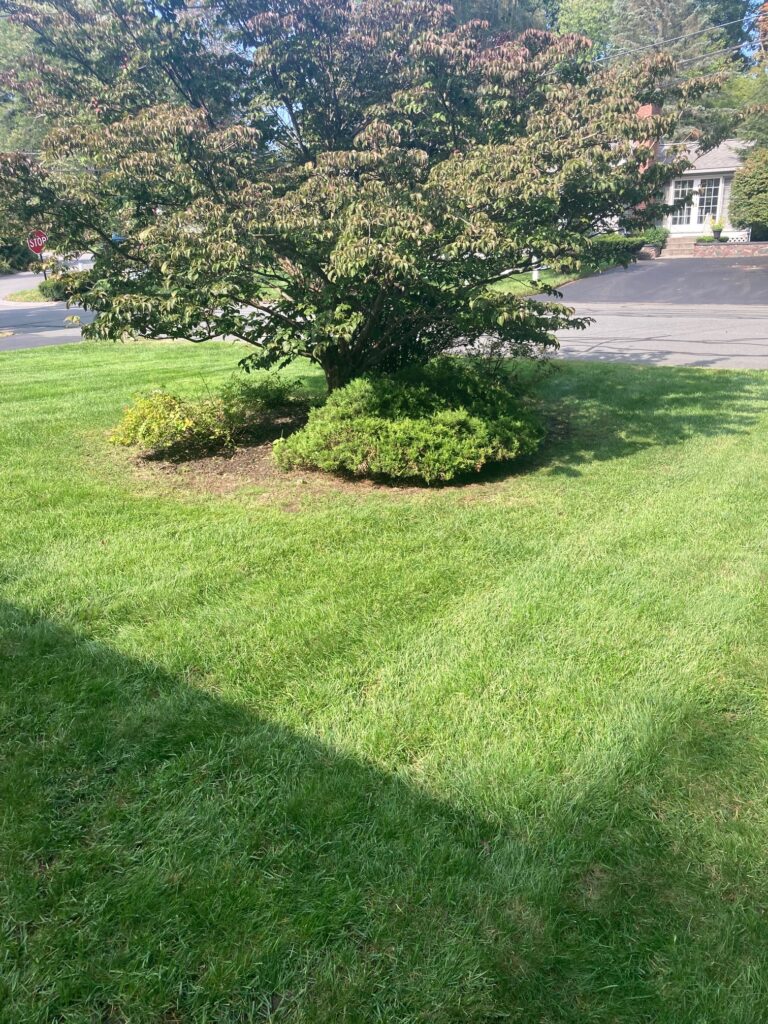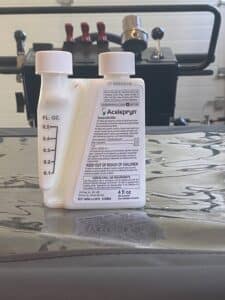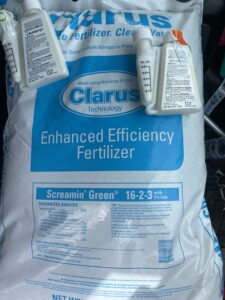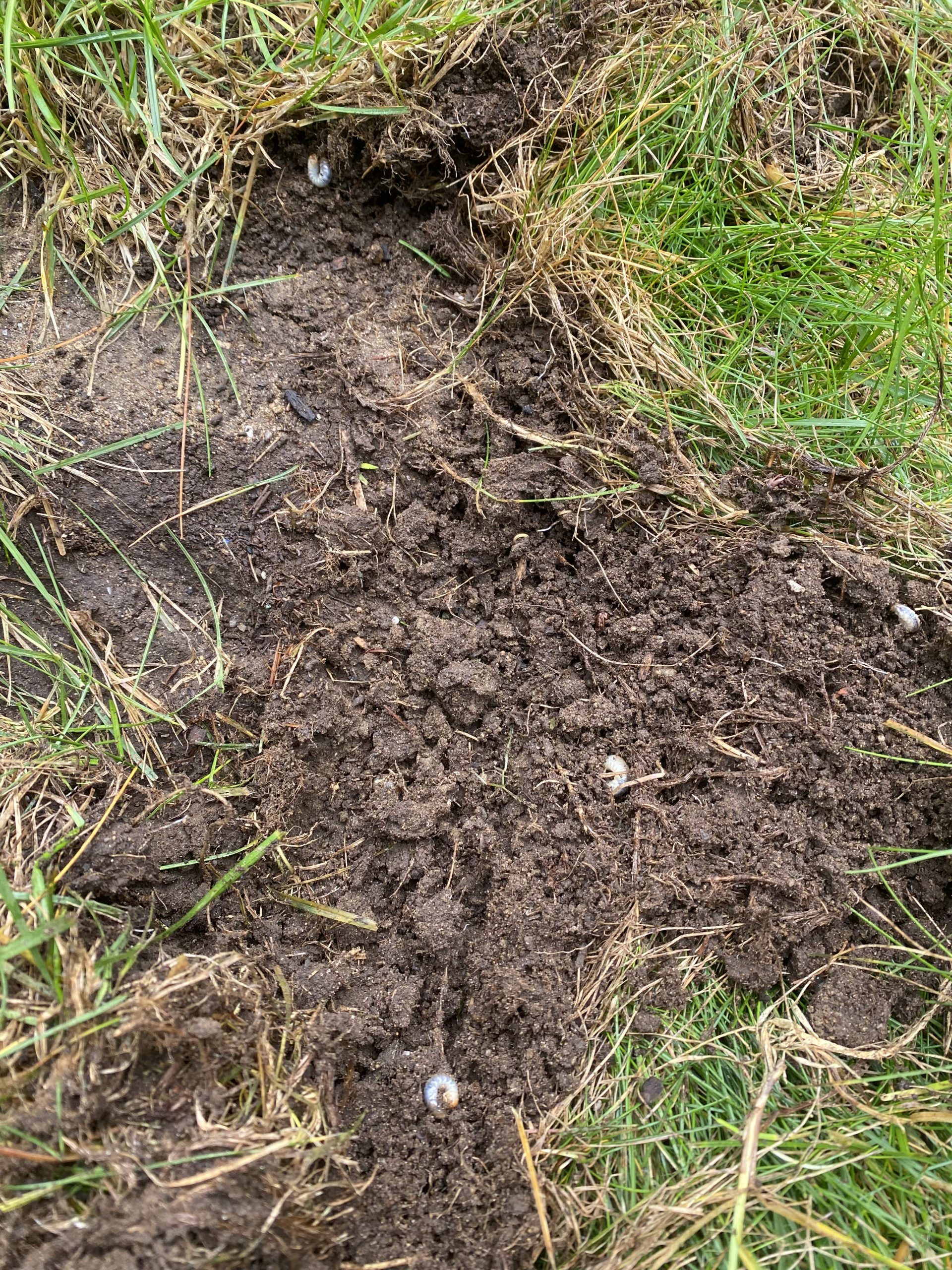LAWN PHIX PRO TIPS
Grub Warning! This year’s mild winter means more grubs. Skip the ineffective Imidacloprid and use Acelepryn for prevention instead. Apply confidently in the early spring (April-May) to avoid lawn damage. Acelepryn is safe for pets and pollinators and effective against various grub types. Combine with fertilizer and weed control for a complete lawn care solution. Consider professional help if needed.
- Imidacloprid is ineffective against grubs.
- Apply Acelepryn in early spring for prevention.
- Acelepryn is safe for pets and pollinators and is highly effective.
- Combine with fertilizer, nutrition, and weed control for complete spring care.
- Consider professional help if needed.
Table of Contents
It’s been a relatively mild winter thus far. And while we’ve seen a bit more snow and rain to date, the warmer temperatures are, in fact, a cause for concern when it comes to the upcoming lawn care season.
If you’re enjoying the warmth and humidity this winter, you should know there’s a tradeoff — and it starts with a grub infestation.
Warm winters usually equal more grubs since the deep freeze won’t kill off the unlucky extras. And if you’re banking on Imidacloprid (Merit) as a solution, no dice: Imidacloprid is no longer effective against Oriental and Asiatic Beetles.
We saw a lot of these beetles in 2023. We also saw grub breakthroughs and lawn damage – from dead brown patches to complete devastations.
So, if you’re not being strategic about preventative grub control this year, you might wake up to serious grub damage this summer.
If you have not considered grub prevention in the past, then I recommend doing so in 2024. I always apply preventative grub control treatments in early May to stop these turf invaders in their tracks.
When to apply your preventative grub control treatment
The best treatment time is in the early spring, between April and May. You don’t have to wait for your last frost date, but you should get the jump on grub control as soon as possible.
If you miss the window or have a surprise breakthrough, you can use a different treatment like Dylox – a fast-acting grub killer – in early summer or when the breakthrough occurs. Lawn care services also help here. Below are your grub treatment options.
If you want more details about the grub life cycle, check out my step-by-step guide to grub control and prevention.

The best grub prevention products to choose
I recently ran a poll here and on social media, asking about the grub infestations of 2023 – as I fully expect to see more in 2024.
- The cases of reported damage on Imidacloprid-treated lawns were 64%
- The cases of reported damage on Chorantraniliprole-treated lawns was 14%
- 100% of the Chlorantraniliprole lawns with damage were treated with GrubEx
- 0% of the Chlorantraniliprole lawns with damage were treated with Acelepryn
This is why Acelepryn has been my go-to product since 2021.
I’ve used many types of grub killers in my time, each with its pros, cons, and effectiveness rates. But after extensively testing Acelepryn in my yard – and using it exclusively in 40+ of my client’s lawns – I have not seen a single breakthrough of Japanese, Oriental, or Asiatic grubs.
Whether or not you’ve had a grub infestation in the past, I can’t recommend Acelepryn enough. It’s the king of grub control in any yard, and one of the most effective ways to protect the roots of your grass.
If you’re concerned for your family, pets, or pollinators, then you can rest assured knowing Acelepryn is as safe as they come. In fact, tt’s so safe that there isn’t a signal or caution word on the label. And contrary to Imidicloprid, Acelepryn is not harmful to honeybees or other pollinators.
As I mentioned before, if you have a grub breakthrough, I recommend Dylox. It’s not a preventative grub control treatment, but it will quickly and effectively kill grubs after they are established in your grass.
Remember: Imidacloprid (Merit) is no longer a reliable treatment for grubs. Your best bet is to apply Chlorantraniliprole/Acelepryn and stop the grub problem before it starts.

Fertilizer, weed control, and grub insecticide combos
Preventative grub control is just a part of your spring lawn care regimen. There are other things your lawn needs during these months, including fertilization, nutrition, and weed control.
You can help your lawn thrive with curative treatments and proper turf nourishment with the right combination of products.
I’m using 24-0-8 with .067% Acelepryn and .167% Dimension at 5 lbs. per 1,000 sq. ft. this year. I plan on applying this during the first week of May. It’s also a 40% slow-release blend, which means it’ll begin feeding (and keep feeding) the grass through June.
For homeowners who may not be able to find this specialty product, you can try a combination of the following:
- 16-2-3 fertilizer at 4-5 lbs. and 0.25 oz. of liquid Acelepern per 1,000 sq. ft.
- 22-0-5 with 0.067% Aceleperyn combo (or 19-0-4 found at Siteone)
- Include 0.5 oz. of Dimension 2EW or Barricade (Prodiamine) as late as the first week of June (in New England)

Your preventative grub control treatment starts with Lawn Phix
Maintaining a green lawn takes a lot of elbow grease, and in 2024, it might take more than usual. If you’re worried about severe damage affecting your healthy lawn, you can call us today to help your lawn recover.
Most homeowners only need a few months of treatment to see major improvements in their turf. Our lawn care services make it easy to get a preventative grub control treatment without stressing about the particulars.
You can get a free estimate here.
Quick grub control FAQs
What is the best month to put down grub control?
Mid spring (April-May) is typically your best bet if you want to keep your lawn in good shape.
Can I treat for grubs in spring?
Yes. In fact, it’s preferred. Just don’t use Imidacloprid, since it’s resistant to grubs (and potentially other pests like fruit flies and fungus gnats).

